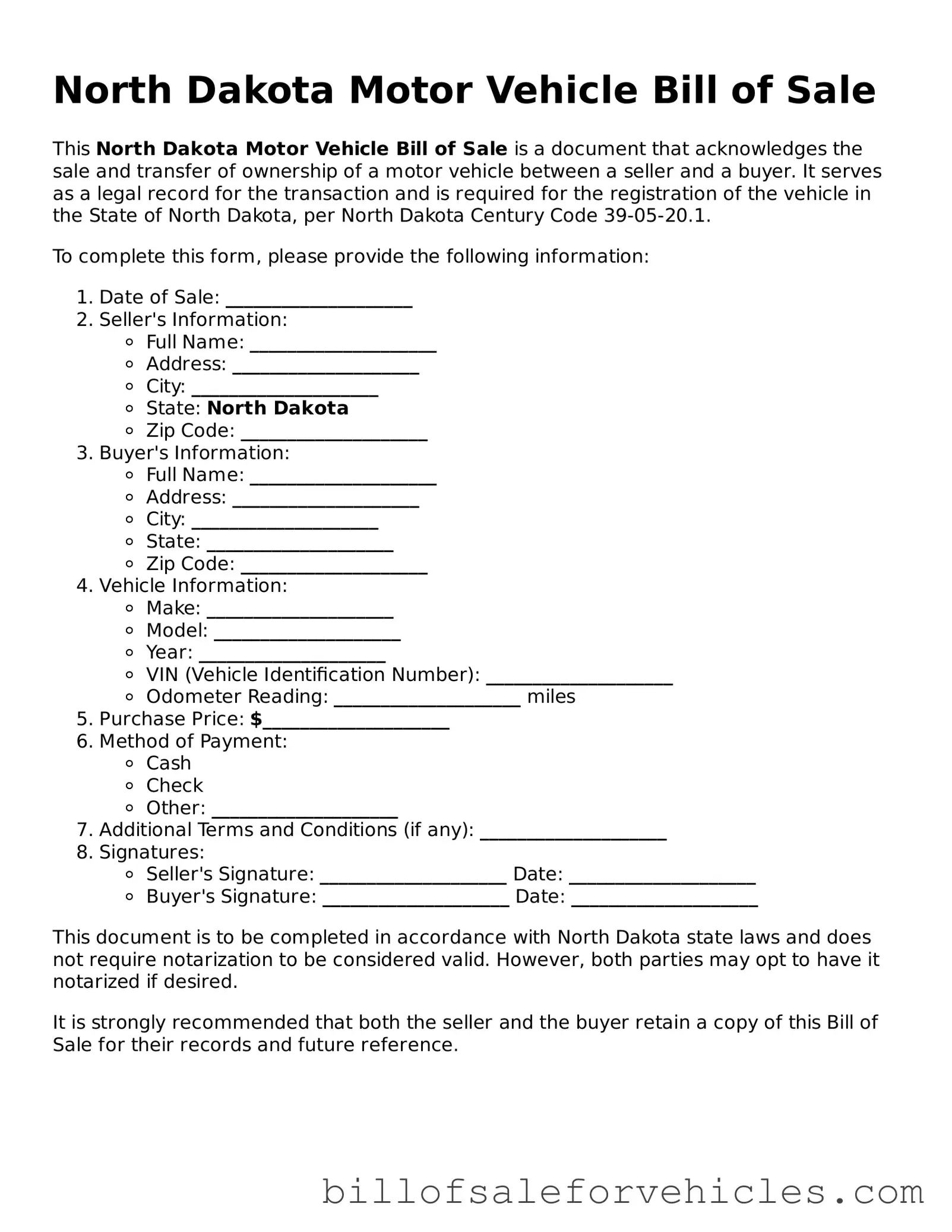What is a North Dakota Motor Vehicle Bill of Sale form?
A North Dakota Motor Vehicle Bill of Sale form is an important document used to record the details of a transaction involving the sale of a motor vehicle in the state of North Dakota. It includes information such as the make, model, year, and vehicle identification number (VIN) of the vehicle, as well as the names and addresses of the seller and the buyer, and the sale price.
Is a Motor Vehicle Bill of Sale form required for the sale of a vehicle in North Dakota?
Yes, in many cases, a Motor Vehicle Bill of Sale form is required by the North Dakota Department of Transportation (ND DOT) for the official transfer of ownership. It serves as a proof of purchase and may be needed for the registration and titling of the vehicle.
What information needs to be included in a North Dakota Motor Vehicle Bill of Sale?
The form should include the full names and addresses of both the seller and the buyer, the sale price, and detailed information about the vehicle being sold, such as make, model, year, VIN, and odometer reading at the time of sale.
Does the Motor Vehicle Bill of Sale need to be notarized in North Dakota?
While not always mandatory, having the Motor Vehicle Bill of Sale notarized can add an extra layer of legal protection and authenticity to the document. It is recommended to check the latest requirements with the ND DOT or consult with a legal professional.
Can I create my own Motor Vehicle Bill of Sale if I'm selling a vehicle in North Dakota?
Yes, you can create your own Motor Vehicle Bill of Sale as long as it contains all the necessary information required by the state. There are templates available online, but ensure that any template you use complies with North Dakota laws.
What should I do after completing the Motor Vehicle Bill of Sale?
After completing the form, both the buyer and the seller should keep a copy for their records. The buyer will need to present the Bill of Sale to the ND DOT as part of the vehicle registration and titling process.
How can I ensure that my Motor Vehicle Bill of Sale is legally binding in North Dakota?
To ensure that your Motor Vehicle Bill of Sale is legally binding, make sure that all the information provided is accurate and complete. Both parties should provide their genuine signatures. It's advisable to have the document reviewed by a legal professional, especially in complex or high-value transactions.
